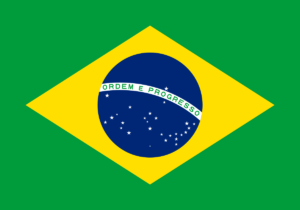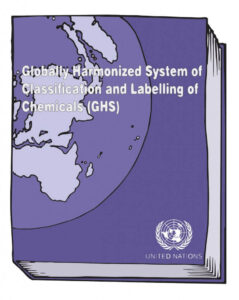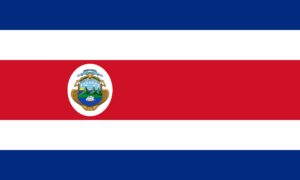Written on: March 1, 2022 by Mae Hrycak
During these cold winter months in Canada, many of us often imagine ourselves enjoying the sunny skies and beautiful beaches of South America and Central America. Some of our friends and family members even book trips there to escape the grips of Old Man Winter, away from the continuous snow and chilly wind. This year is a good time to start thinking about the regulation changes taking place in these Latin American countries. While the Globally Harmonized System of Classification & Labeling of Chemicals (GHS) may not be the most exciting reading material for the beach, the rest of us at home can get a hot drink and imagine ourselves in a warmer place.
Chile releases official list of substance classifications
In the December 2021 edition of International Regulatory Influences, my colleague, Cassandra Taylor, discussed Chile’s recent implementation of the GHS under Decree 57 of 2019, Regulation on Classification, Labeling & Notification of Hazardous Chemicals & Mixtures. An important
update to that issue includes Chile’s Ministry of Health publication for its anticipated list of official substance GHS classifications. The data from this list is expected to be used as a minimum reference during substance classification determination by manufacturers and importers. Currently, we estimate that the list has over 4,000 substances present and it’s expected to grow over time; it is therefore a good idea to frequently check for changes, especially since the Ministry will review the list at least every two years. The Chile GHS classifications list may not yet be in all major databases either, so you may need to check the list manually for the time being to ensure the data is considered when authoring a Safety Data Sheet (SDS) or GHS label. Most list entries include the Chemical Abstract Service (CAS) number for easy searching, and chemical names are given in Spanish, which will be helpful for inclusion on the Chilean documents.
Beyond the GHS hazard category and code for the substances, the publication also includes specific concentration limits (SCLs), multiplying (M)-factors, acute toxicity estimates (ATEs) and other appropriate notes (for example: N, P) for consideration. Chile’s list itself does not include the meaning of the notes but they can be acquired in the Resolution 777 (August 2021) publication that announced approval of the official substance classifications. The content of the list appears to follow Europe’s Classification, Labeling & Packaging (CLP) Annex VI harmonized entries, although there could be some deviations, so be sure to confirm the information when classifying products for GHS in Chile.
Substances that are not specified on the official list should be evaluated by the manufacturer for hazards under the Decree 57/2019 classification criteria. The current list is available here.
Any company that manufactures or distributes industrial use substances in Chile will now need to ensure its SDS and workplace labels meet GHS compliance, as the deadline passed last month in February 2022. Non-industrial use substances, industrial use mixtures and non-industrial use mixtures will have additional time to meet compliance with dates of 2023, 2025 and 2027, respectively. It is hard to believe, but Feb. 9, 2023, is less than a year away! Suppliers of non-industrial use substances who have not already done so should start planning their GHS conversion now.
We can expect another joint publication from the Ministry of Health and the Ministry of Environment this year in regards to risk assessment criteria for future chemical notifications. There is speculation that this could come out sooner than the 18-month deadline of August 2022.
Brazil GHS amendments are coming
The GHS has been implemented 
in Brazil since 2009; however the Brazilian Association of Technical Standards (ABNT) published its draft GHS amendment in October 2020, called the NBR 14725: Chemicals–Information about Safety, Health & Environment–General Aspects of the Globally Harmonized System (GHS), Classification, SDS & Labeling of Chemicals. This regulation update will move Brazil to the 7th revised edition of the United Nations GHS Purple Book. Given that the 3rd revised edition of the GHS is currently being followed, this means that Brazil will soon implement the category Aerosol 3, non-flammable aerosol hazard classification. The gases under pressure categories will no longer need to be included for aerosol products. Another anticipated change is the creation of just one all-encompassing regulation instead of the four separate parts that currently outline Brazil’s GHS terminology, classification, labeling and SDS criteria.

We expect the revised draft regulation to be released for comment sometime in 2022. Once the next round of public comments is received, the amendment will be finalized, followed by a two-year implementation phase.
Costa Rica GHS implementation end date approaching
This year marks the end of the transition period for Costa Rica’s GHS implementation. Under the Executive Decree No. 40457-S, Technical
Regulation RTCR 481:2015 Chemical Products: Hazardous Chemical Products Labeling, the country had five years to update SDS and labels for hazardous chemical products to the new format by the deadline of Dec. 30, 2022. This regulation has adopted the full hazard classification and SDS communication requirements from the 6th revised edition of the GHS. Unlike in many other countries, the newly adopted GHS did not specify separate transition periods for substances and mixtures in Costa Rica. Additionally, the Executive Decree No. 40457-S, Technical Regulation RTCR 478:2015 Chemical Products: Hazardous Chemical Products, Registration, Import & Control was also published in 2017 and the two regulations complement each other. Potentially dangerous chemical products require registration and must have a GHS-compliant SDS.
It is noteworthy that haza rdous product labels in Costa Rica must specify the dangerous ingredients along with the concentration (%), and the statements “In case of poisoning consult a doctor and provide this label” and “Keep out of reach of children” in bold font, among other standard label elements. Of course, the documents must be in the official language of Spanish.
rdous product labels in Costa Rica must specify the dangerous ingredients along with the concentration (%), and the statements “In case of poisoning consult a doctor and provide this label” and “Keep out of reach of children” in bold font, among other standard label elements. Of course, the documents must be in the official language of Spanish.
Both regulations outline many exempt product types, including, but not limited to: raw materials for medicines, raw materials for cosmetics, raw materials for food, pesticides for domestic and professional use and food additives.
GHS status of other countries
While researching the GHS status of other Latin American countries, it has become clear that few have been able to implement such regulations in the past several years. While Chile and Colombia were able to pass their new GHS legislations in 2021, many other countries’ regulations remain in consideration or in a draft phase from previous years. Perhaps the COVID-19 pandemic has forced the authorities of these countries to set other priorities beyond their SDS regulations. We are hopeful that 2022 will usher in a new era where hazardous chemical control can become a focus again. Nexreg will be sure to update SPRAY readers with any new developments that take place this year. SPRAY